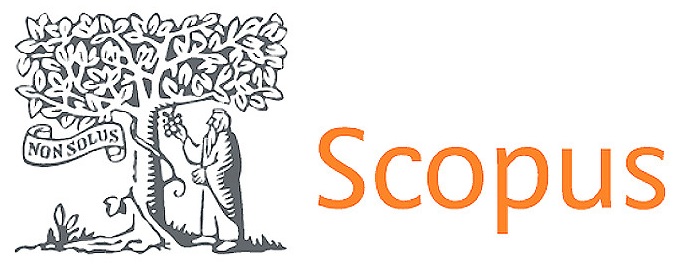Stem Cell-Based Cartilage Engineering Approaches for Osteochondral Defect Regeneration and Functional Tissue Repair
DOI:
https://doi.org/10.56294/mw2023148Keywords:
SDSCs, OC Defect, Regeneration, Tissue Repair, Fibrin Glue- PGA, CollagraftAbstract
Osteochondral defects offer important concerns in orthopedic medicine suitable to the restricted self-curing ability of cartilage. Stem cell-based cartilage engineering has emerged as a capable method for OC defect regeneration and functional tissue repair. Research explores the SDSCs-based cartilage engineering approaches for OC defect regeneration and functional tissue repair. Rabbit knee joints are used to separate SDSCs, which are then grown to passage 5 and added to a fibrin glue- PGA scaffold. The designed premature cartilage constructions are transplanted into rabbit femoral condyle defects following 50 days of in vitro stimulation in a growth factor-enriched environment. Research evaluated two groups: the Construct Group, where SDSC-engineered premature cartilage is implanted with Collagraft as a bone alternate, and the Empty Group, where defects are left untreated. The data is analyzed using statistical evaluation performed with SPSS software. Histological analysis showed that SDSCs effectively underwent chondrocyte differentiation, merging with native cartilage and generating collagen III and sulfated GAG. While the Empty Group generated fibrocartilage, indicating worse regeneration, the Construct Group showed uniform hyaline-like cartilage with strong collagen III and GAG expression and no detectable collagen I or macrophages at eight months after implantation. These results demonstrate the viability of using SDSC-based synthetic cartilage to heal OC defects.
References
1. Neybecker P, Henrionnet C, Pape E, Mainard D, Galois L, Loeuille D, Gillet P, Pinzano A. In vitro and in vivo potentialities for cartilage repair from human advanced knee osteoarthritis synovial fluid-derived mesenchymal stem cells. Stem cell research & therapy. 2018 Dec;9:1-5. https://doi.org/10.1186/s13287-018-1071-2
2. Guilak F, Pferdehirt L, Ross AK, Choi YR, Collins K, Nims RJ, Katz DB, Klimak M, Tabbaa S, Pham CT. Designer stem cells: Genome engineering and the next generation of cell‐based therapies. Journal of Orthopaedic Research®. 2019 Jun;37(6):1287-93.https://doi.org/10.3390/ijms21176046
3. Liu Y, Wang M, Luo Y, Liang Q, Yu Y, Chen F, Yao J. Enhancing stem cell therapy for cartilage repair in osteoarthritis—a hydrogel focused approach. Gels. 2021 Dec 14;7(4):263.https://doi.org/10.3390/gels7040263
4. Nam Y, Rim YA, Lee J, Ju JH. Current therapeutic strategies for stem cell‐based cartilage regeneration. Stem cells international. 2018;2018(1):8490489. https://doi.org/10.1155/2018/8490489
5. Thorp H, Kim K, Kondo M, Maak T, Grainger DW, Okano T. Trends in articular cartilage tissue engineering: 3D mesenchymal stem cell sheets as candidates for engineered hyaline-like cartilage. Cells. 2021 Mar 13;10(3):643.https://doi.org/10.3390/cells10030643
6. Stampoultzis T, Karami P, Pioletti DP. Thoughts on cartilage tissue engineering: A 21st century perspective. Current Research in Translational Medicine. 2021 Jul 1;69(3):103299.https://doi.org/10.1016/j.retram.2021.103299
7. Lopa S, Mondadori C, Mainardi VL, Talò G, Costantini M, Candrian C, Święszkowski W, Moretti M. Translational application of microfluidics and bioprinting for stem cell‐based cartilage repair. Stem cells international. 2018;2018(1):6594841.https://doi.org/10.1155/2018/6594841
8. Kang H, Zeng Y, Varghese S. Functionally graded multilayer scaffolds for in vivo osteochondral tissue engineering. Actabiomaterialia. 2018 Sep 15;78:365-77.https://doi.org/10.1016/j.actbio.2018.07.039
9. Zhang B, Huang J, Narayan RJ. Gradient scaffolds for osteochondral tissue engineering and regeneration. Journal of Materials Chemistry B. 2020;8(36):8149-70.https://doi.org/10.1039/D0TB00688B
10. Koh YG, Lee JA, Kim YS, Lee HY, Kim HJ, Kang KT. Optimal mechanical properties of a scaffold for cartilage regeneration using finite element analysis. Journal of tissue engineering. 2019 Feb;10:2041731419832133.https://doi.org/10.1177/2041731419832133
11. Murphy SV, De Coppi P, Atala A. Opportunities and challenges of translational 3D bioprinting. Nature biomedical engineering. 2020 Apr;4(4):370-80.https://doi.org/10.1038/s41551-019-0471-7
12. Chocholata P, Kulda V, Babuska V. Fabrication of scaffolds for bone-tissue regeneration. Materials. 2019 Feb 14;12(4):568.https://doi.org/10.3390/ma12040568
13. Liu YY, Lu Y, Oh S, Conduit GJ. Machine learning to predict mesenchymal stem cell efficacy for cartilage repair. PLoS computational biology. 2020 Oct 7;16(10):e1008275.https://doi.org/10.1371/journal.pcbi.1008275
14. Thorp H, Kim K, Kondo M, Grainger DW, Okano T. Fabrication of hyaline-like cartilage constructs using mesenchymal stem cell sheets. Scientific reports. 2020 Nov 30;10(1):20869.https://doi.org/10.1038/s41598-020-77842-0
15. Williams DF. Challenges with the development of biomaterials for sustainable tissue engineering. Frontiers in bioengineering and biotechnology. 2019 May 31;7:127.https://doi.org/10.3389/fbioe.2019.00127
16. Go G, Jeong SG, Yoo A, Han J, Kang B, Kim S, Nguyen KT, Jin Z, Kim CS, Seo YR, Kang JY. Human adipose–derived mesenchymal stem cell–based medical microrobot system for knee cartilage regeneration in vivo. Science Robotics. 2020 Jan 22;5(38):eaay6626.https://doi.org/10.1126/scirobotics.aay6626.
Published
Issue
Section
License
Copyright (c) 2023 Uma Bhardwaj , Puspak Samal , H. Malathi (Author)

This work is licensed under a Creative Commons Attribution 4.0 International License.
The article is distributed under the Creative Commons Attribution 4.0 License. Unless otherwise stated, associated published material is distributed under the same licence.






